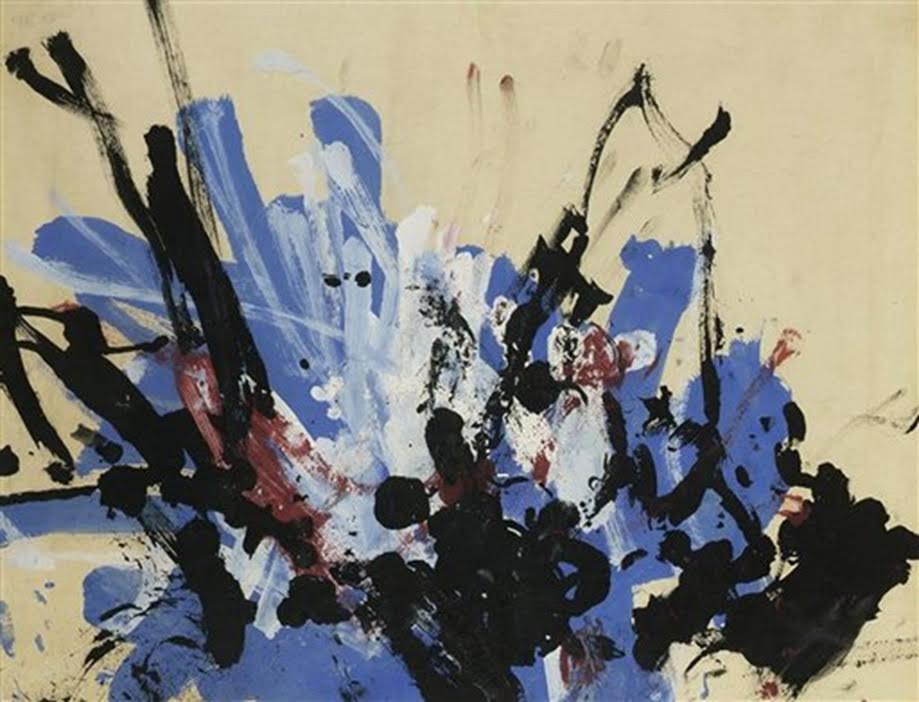A few years ago, I watched and enjoyed My Kid Could Paint That, a documentary about Marla Olmstead, a four-year-old abstract painter who became a brief art-world sensation, her canvases (which towered over the tiny artist) at one point selling for thousands of dollars apiece. Olmstead raised the bar high indeed for all subsequent preschool-aged art celebrities, but the world of unlikely painters in general has a fuller, stranger history. Witness, for instance, Congo the Chimp, the London Zoo’s artistic sensation of the 1950s, a noted animal artist who sold work to such noted non-animal artists as Picasso, Miró, and Dalí, the last of whom made a comparison with one of the best-known abstract painters of the day: “The hand of the chimpanzee is quasihuman; the hand of Jackson Pollock is totally animal!”

Congo, who began his art career the moment he happened to pick up a pencil, went on, writes the Telegraph’s Nigel Reynolds, to become “a television celebrity in the late 1950s as the star of Zootime, an animal programme presented from the London Zoo by Desmond Morris, the zoologist and anthropologist. He became even more of a cause célèbre when the Institute of Contemporary Arts mounted a large exhibition of his work in 1957.
Critics had a field day and debate about the meaning of art raged furiously.” You can see Morris, a surrealist painter himself, in addition to his zoological, anthropological, and televisual work, interacting with Congo in the 1950s and reflecting on the place of the chimpanzee artist in his own career in the clip at the top of the post. The newsreel below covers an exhibition called The Young Idea, which featured paintings not just from Congo but from such Marla Olmstead predecessors as three-year-old Timothy Vaughn and eighteen-month-old Graham Phillips. One of Congo’s paintings appears above.
And so to the obvious question: But Is It Art? And assuming it is, writes John Valentine in The Philosopher, “what then follows from such a classification? What sort of difference does it or should it make in the way we approach and appreciate chimpanzee paintings? If they are art, what sort of critical or interpretive discourse about them should we engage in? Do we simply appreciate the lines, colours, and forms of Congo’s paintings and stop at that? Does it make any difference that the paintings were done by a member of a different species? Should species differences make any difference in artistic value?” It may not, at least commercially speaking: Congo may have had his moment six decades ago, but don’t think that means his work will come cheap; back in 2005, some of his paintings went up on the auction block and fetched more than $25,620.
Based in Seoul, Colin Marshall writes and broadcasts on cities and culture. He’s at work on a book about Los Angeles, A Los Angeles Primer, the video series The City in Cinema, and the crowdfunded journalism project Where Is the City of the Future? Follow him on Twitter at @colinmarshall or on Facebook.


I want to have a future job at the intelligent wildlife animal training program
I want to have a future job as a intelligent wildlife animal trainer for this program
i needed this for home work so thx
this chimp got more talent than me?
you spelled program wrong
this is totally a fake website a monkey thaat can paint wow and i thought i was weird
yes that chimp does have more talent than you
he suck
Why for so much money?
I don’t mean to back fire but you need to show more feelings for the little guy
Haha also you are so dumb at least they actually tried to make a website so shut up
And u swallow
no u
I liked it! but I like anime and Kawaii better! UwU TvT UxU OwO OxO
It was a great article used for school